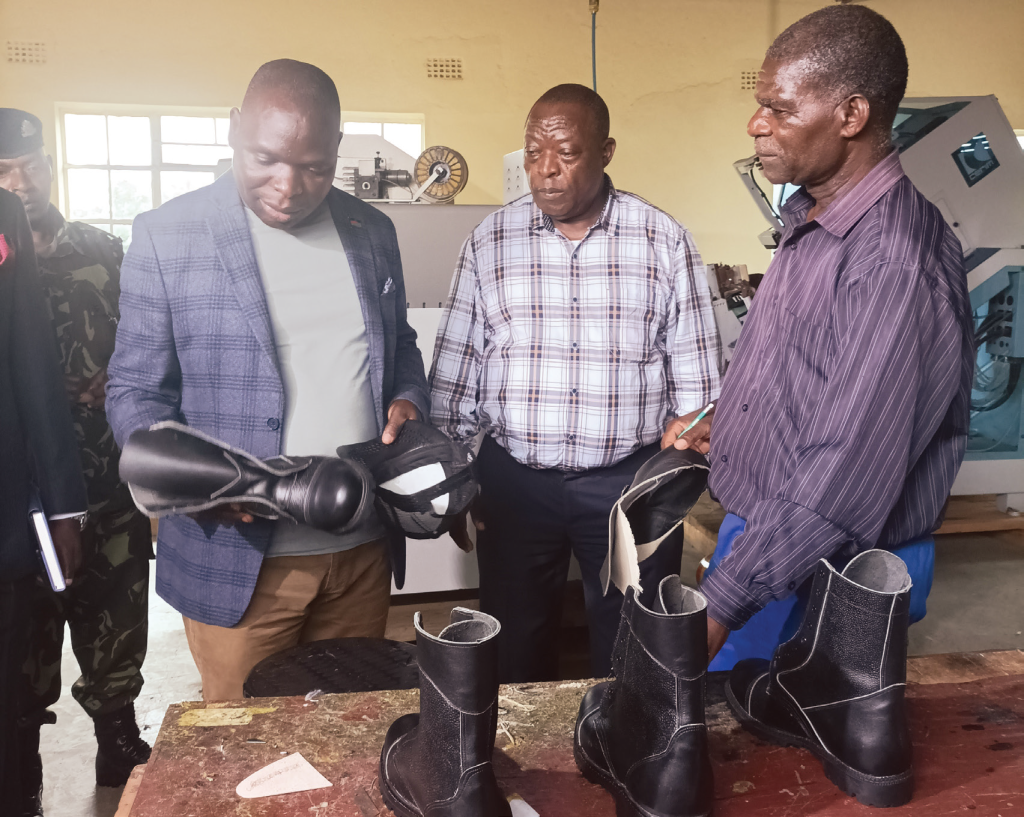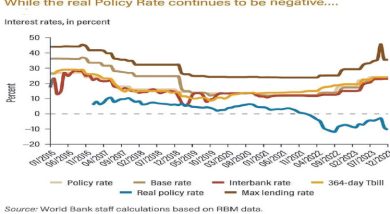Factory underutilised, produces below capacity
Five years after its launch, the $321 710 (about K368 million) modern leather design studio is yet to reach its capacity of producing 400 pairs of shoes a day.
This is because the studio, situated at Kameza in Blantyre, is grappling with power outages, lack of market and human resource.

Banda (L) and Smedi officials admire a pair of shoes inside the leather studio
Launched in 2018, the studio was funded by the European Union through the Malawi Enterprise Productivity Enhancement under the Common Market for Eastern and Southern Africa (Comesa) Regional Integration Support Mechanism initiative.
At the time, it was envisioned that the project would help influence productivity and marketability of African products at the global level and enhance the production and competitiveness of small and medium enterprises through cooperatives in the leather and leather products.
Speaking in an interview on Monday, Small and Medium Enterprises board chairperson Henry Chete confirmed the challenges, but said despite the studio producing on a small scale, it produces durable shoes that can compete on the global market.
He said: “We have serious issues with power outage, market and demand but the machines are strong and capable.
“If all the machines are running and with adequate human resource, the machine can produce 400 pairs of shoes in eight hours.”
One of the officials at the facility said there is only one skilled shoe maker operating over 30 machines amid persistent power blackouts.
Said the official: “On some days, we can make just a pair in a day because there is no order, but we can go up to 20 pairs in a day.”
He said at times, they hire some shoemakers who at the moment have gone to a rival firm which is making shoes for a government institution.
The official lamented that to produce shoes they also have to import some raw materials from Zimbabwe and Zambia.
Ministry of Trade and Industry data shows that locally, footwear demand is estimated at 16 million pairs against current production of 300 000 pairs per year.
The huge demand for footwear signifies the huge potential the industry has in contributing to the country’s economic growth.
Speaking in an interview after touring the studio on Monday, Minister of Trade and Industry Simplex Chithyola Banda said there is need to popularise the studio in line with the Buy Malawi Strategy.
He said: “Government is spending a lot of money importing boots, shoes and other products while we have facilities locally that can supply good products.
“Power is a means of production and it is high time we had back up power if such initiatives were to thrive. Government will be doing all it can to provide sustainable power.”
Banda said the shoes produced at the facility can be exported to countries such as Zambia, Mozambique and Tanzania as they are durable and of good quality.
Africa holds great potential in developing the sector on both the supply and demand side of the leather value chain with approximately 26 percent of the global livestock population and footwear consumption estimated at between 878 million to 1.1 billion pairs per annum, according to data from Comesa.
On the other hand, the leather value chain globally is estimated at more than $100 billion and this figure does not include the finished leather, which is used in upholstery for automobiles and household furniture as it cannot be easily ascertained in trade figures and the value it adds to the prices of vehicles and furniture. Under the Buy Malawi Strategy, launched in March 2016, government aspires to enhance competitiveness of local firms, stimulate local production, promote industrialisation and enhance import substitution.





